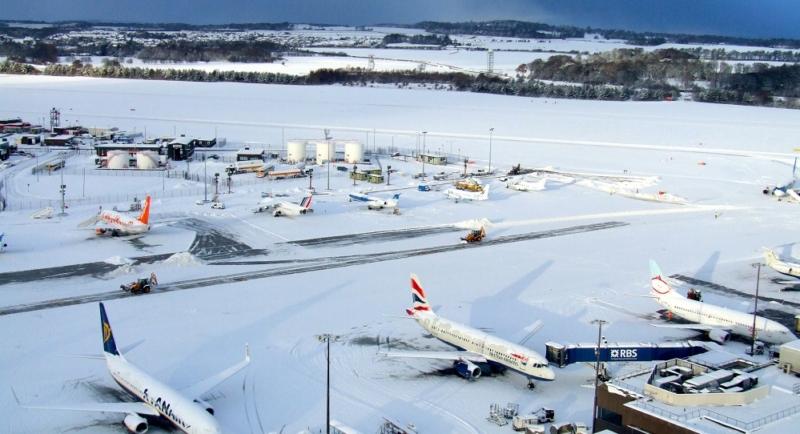Why is my flight delayed in foggy weather?
28 November 2022Weather always plays a very big part in how we manage air traffic, and close co-ordination with the Met Office is vital. We liaise with the Met Office every day, and even more frequently on days when fog is likely. But what exactly does fog mean for an air traffic controller?
Dealing with fog is pretty common and we have processes and procedures to manage the air traffic, such as ‘flow regulations’ to reduce the amount of traffic and try to minimise airborne holding and fuel burn.

Of course, when it hasn’t been forecast these procedures have to be implemented more quickly, meaning the workload also increases quickly; fog around just one airport can cause a ripple effect across the wider air traffic management network. When this happens at one of the London airports, for example, the controllers, supervisors and flow management team in our Terminal Control (TC) operations at Swanwick will be working closely with the tower controllers, airlines and airports to ensure the aircraft can land and depart safely, and to manage the wider operational impact.
The 360 degree view from air traffic control towers means the controllers can normally see what’s going on around the airfield, to help them move the aircraft to and from the runway. But when fog descends, their view disappears. Instead they use electronic aids, such as surface movement radar, and switch to ‘low visibility procedures’ to help safely move the aircraft.
Aircraft land using the Instrument Landing System (ILS) at the airport, which sends the aircraft a beam which they follow as they land on the runway. This beam must not be broken, which could happen when it’s foggy if other aircraft are on the runway. This means spacing between aircraft has to be increased, with aircraft having to taxi far enough away so they do not interfere with the ILS beam. Typically the spacing between aircraft increases by up to 50%

Increasing the spacing between arrivals decreases the number of aircraft that can land during the foggy period. This means delays, which can build very rapidly for the aircraft holding in the air, waiting for their turn to land. Sequencing the aircraft to land, and managing the aircraft being delayed in the air, is the job of the Approach Controllers – for the main London airports these are based at the Swanwick Centre, elsewhere the service is usually provided from the Tower. Aircraft don’t have enough fuel to hold indefinitely, so this may mean diversions. The airfields taking diverted traffic could then also become subject to delays because of the extra traffic – or because the same fog then rolls over them, meaning more airfields need to come into play to take diversions.
And there are other variables. Does the airfield have the right equipment to help aircraft land? Different aircraft have different equipment for landing in fog; and different levels of visibility mean pilots need different qualifications to deal with it; and not all airfields can take all types of aircraft anyway. Careful consideration has to be given to all of these aspects to ensure aircraft can land and depart safely.
As you can imagine, this starts to result in very busy airspace, as well as a very busy shift for controllers, who need level heads to make sure everyone is looked after.
It’s hardly a surprise, therefore, to know that air traffic controllers are just as obsessed with the weather and talk about it just as much as everyone else in our unpredictable climate.
Comments
Please respect our commenting policy and guidelines when posting on this website.




29.11.2022
09:26
David Pearson
‘This beam must not be broken, which could happen when it’s foggy if other aircraft are on the runway.’ How do fog conditions impact the ILS Beam reception more so than non fog conditions and as a result of a/c moving around on the runway? . Can someone clarify why the ILS Beam is especially impacted on foggy days?